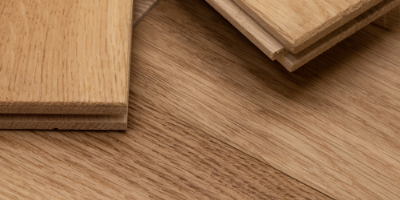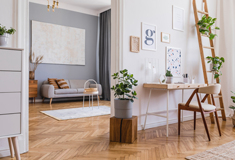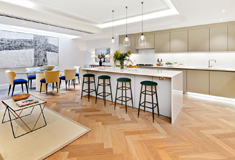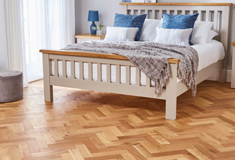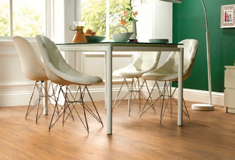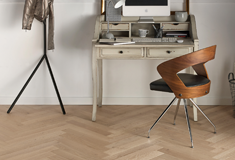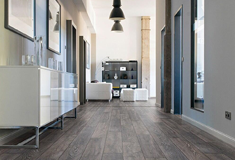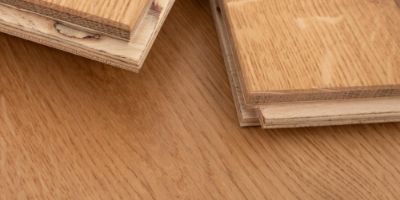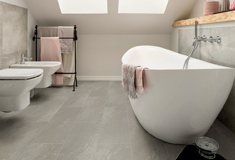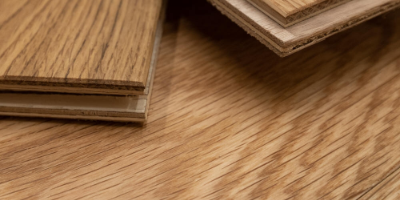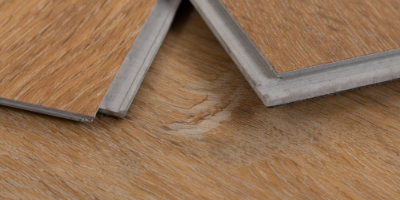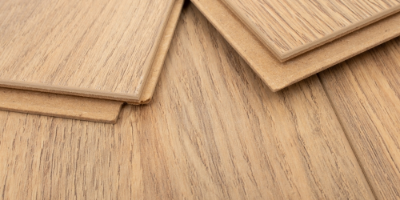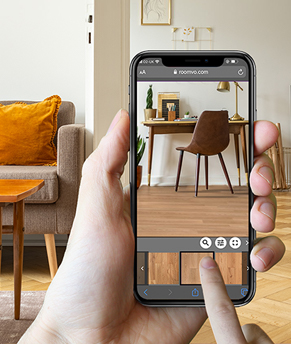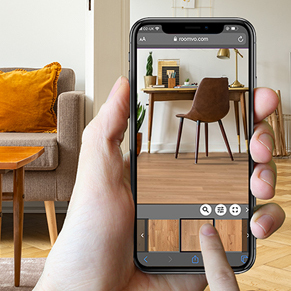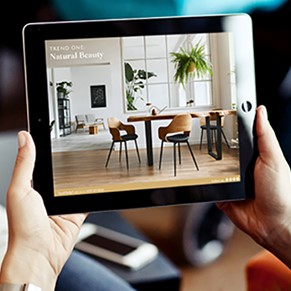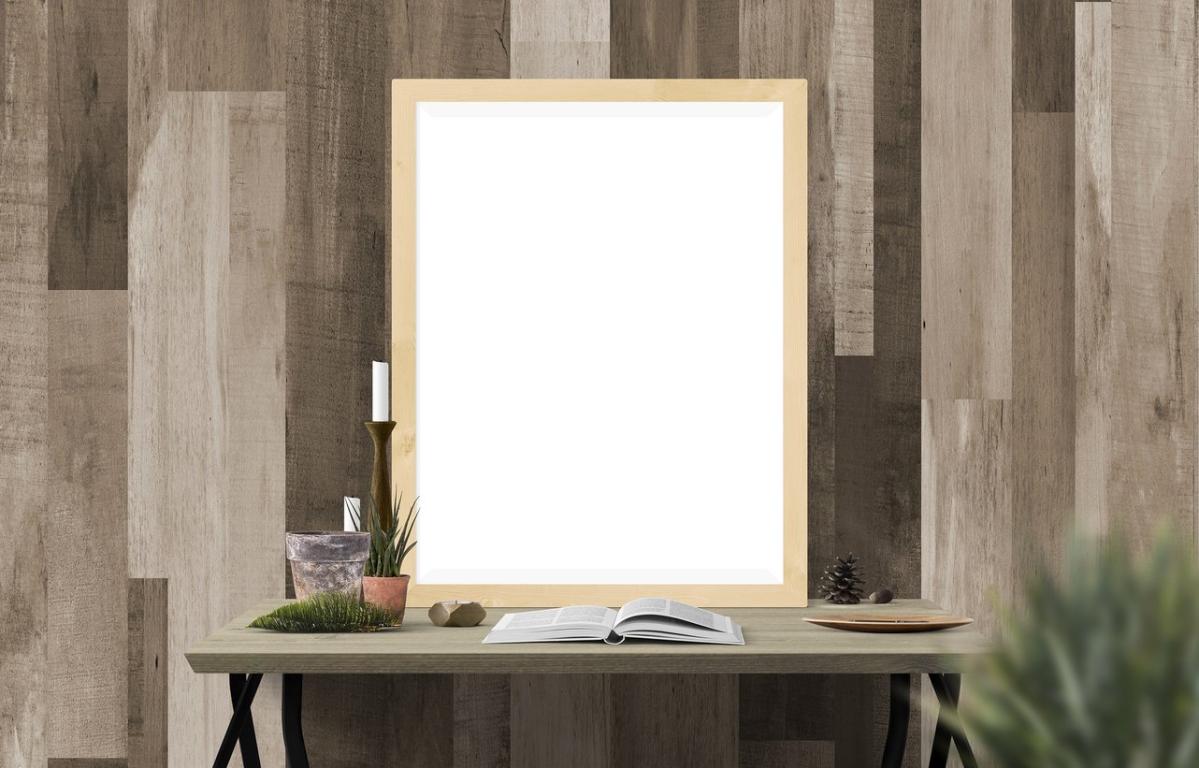The Flooring's on the Wall
Earlier this year we heard talk of a trend that has turned a few heads, particularly ours! Allow us to introduce the world of flooring on the walls… Now, you may be alarmed - don’t worry, we were too but as crazy as it may sound this style of decor can be a creative and effective method for cladding your walls. It’s a great way to introduce a natural feel to your room, as well as creating a flow with your interiors along with being very unique too!
The way in which you use this style can differ on the type of wood you use and the way that you install it. For example you can create an ultra modern or a classic, more traditional vibe with the cladding, the choice is entirely yours.
Of course there is one really important thing to consider before you go all guns blazing with flooring on your walls and that’s if your wall (the base) is actually stable enough for the materials to be fitted on to. As with flooring, the wood should also be staggered even when it is installed on walls, what this means is that you can’t fit it over a surface if the individual planks cant be secured along the entire length of the wall. It may be worth your while to use a plywood base on the wall before installing any of the wood, at least that way you can be assured of a stable surface for the boards
As mentioned earlier the way in which you choose to install the planks can have a different effect on the room as whole, as with any normal floor you have your choice of laying them horizontally, vertically or diagonally - although we would leave the diagonal installation to a professional fitter.
If you are keen on installing flooring horizontally on your wall then there is one crucial thing you must remember; you need a level starting point. This is probably much easier than it sounds so don’t stress too much, simply mark a line throughout the width of a single plank above the floor and voila! There’s your starting point. The same process stands if you wish to install the boards vertically, in that instance you would start a plank-width in from each wall.
The best way to secure the floor to the plywood (if you’ve used it) is to nail it in place, then when you’re finished with the cladding you can fill any holes that the nails have made by using a wood filler. After this you will need to sand the floor (if it is unfinished engineered or solid) and then finish it with which ever finishing product you desire.
We realise that flooring on the walls may not necessarily be everyones cup of tea but it’s a very different take on something, and when done well it can really transform a room and your home!
Have Your Say
Do you have a wooden feature wall? Let us know how you did it down below!
Find us on Facebook, Twitter, and Instagram for more news, blog posts, and great content.

